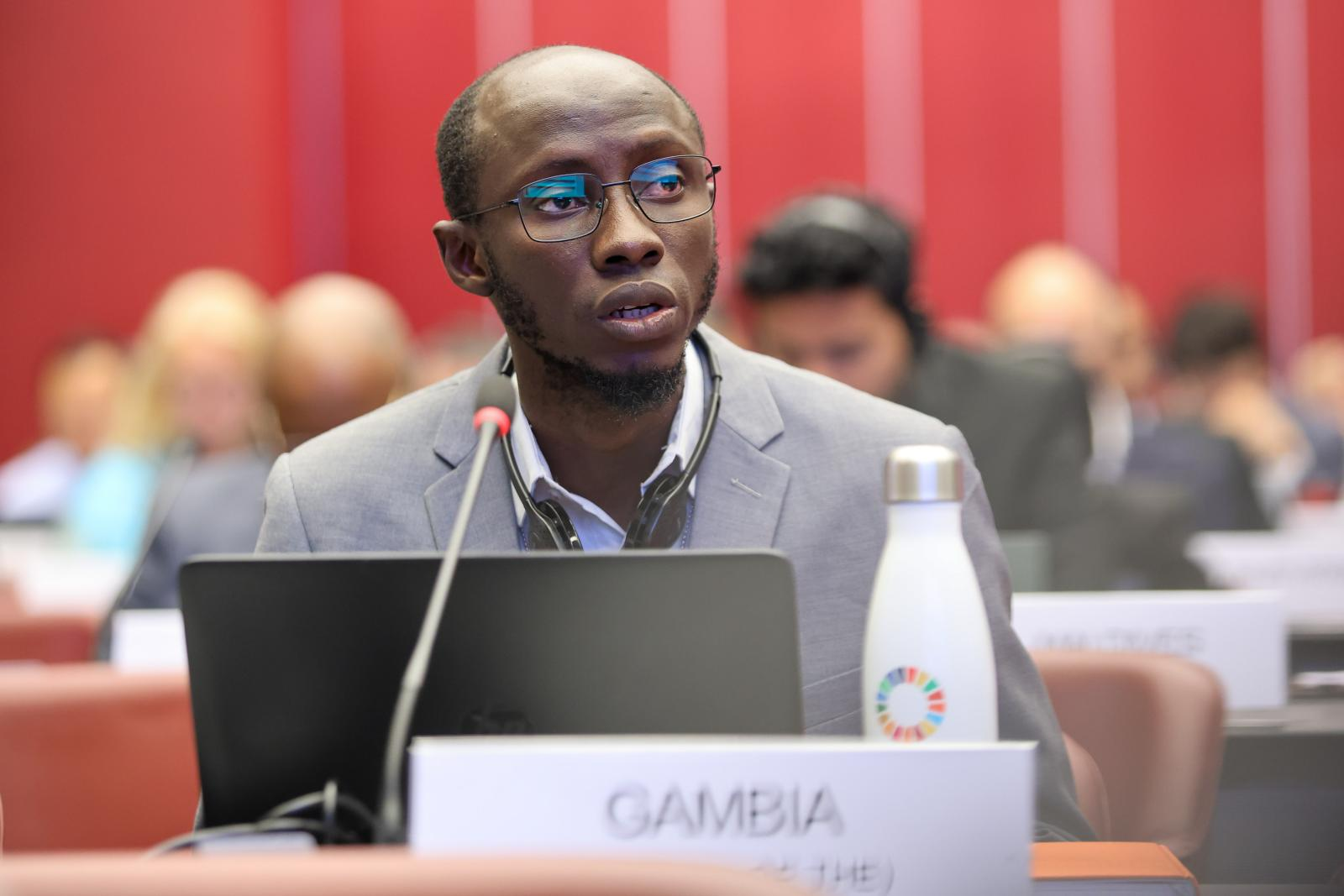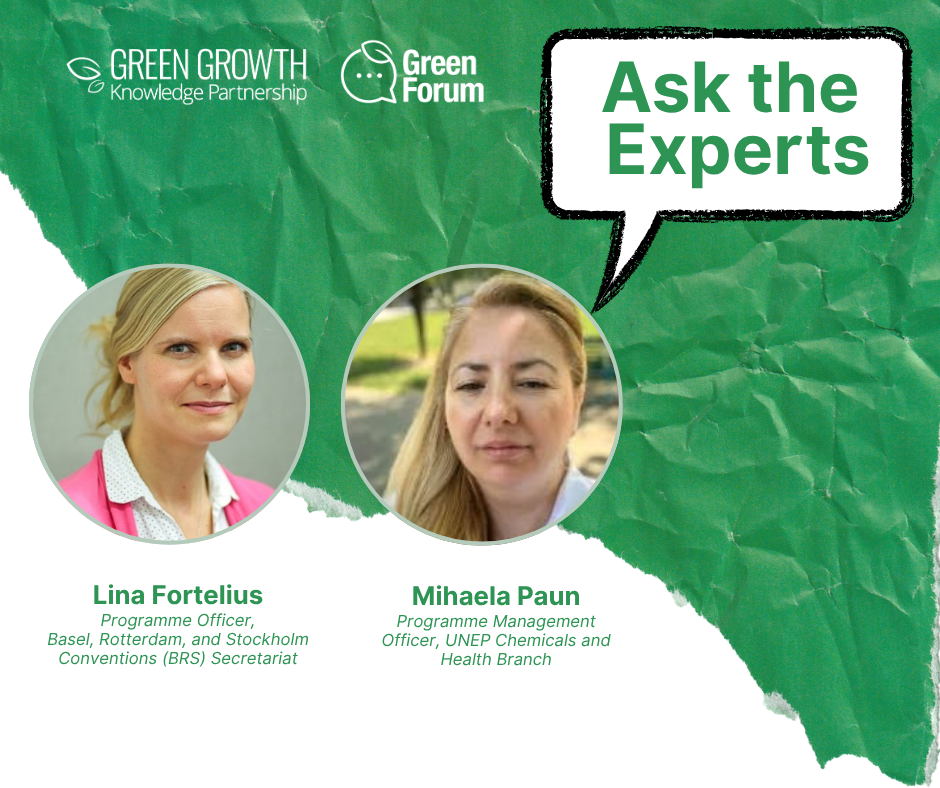NIP Dialogue Series – Voices from the Countries
The Gambia – July 2025
The blog is written following an interview with Mr. Lamin Jaiteh, Registrar of Pesticides and Hazardous Chemicals, National Environment Agency of The Gambia as part of a Series of NIP Dialogues under the Global NIP Update project (GEF ID 10785), funded by GEF and led by UNEP.
How The Gambia is Tackling the POPs
When it comes to chemicals management, The Gambia may be small in geography, but its resolve is far from it. Tucked along the banks of the River Gambia, this West African nation has quietly been advancing in developing thorough strategies on management of persistent organic pollutants (POPs) in the region. At the heart of this effort is Mr. Lamin Jaiteh, the country’s Pesticides Registrar, who has been an integral part of all three phases of the country’s National Implementation Plan (NIP) development.
A Journey of Continuity and Commitment
The Gambia's journey began in 2009 with the submission of its first NIP. This was followed by a second updated version in 2019, and today, the country is deep into its third update cycle under the Global NIP Update project (GEF 10785). “We launched the current project in 2023 after our inception meeting and development of national work plans,” Lamin explains. What followed was a series of coordination meetings and, importantly, the recruitment of national consultants to lead the technical work—though not without hurdles.
“The recruitment of the consultants took more time than anticipated,” Lamin notes. “The lead consultant was someone we had worked with before, which made things easier. But for the others, we will have to eventually rely on our internal Research and Development team.”
Multisectoral by Design
The Gambia’s approach to POPs inventories is proudly multisectoral. Task teams include customs officials, statisticians, academics, environmental officers, and the Fire and Rescue Service.
“The Gambia does not manufacture chemicals. We rely heavily on imports. Customs officers play a key role in monitoring what enters the country,” Lamin explains.
Given that POPs data are not stored centrally, stakeholders from across sectors—including government councils, industry, small enterprises, and waste managers—are brought together to contribute data and insights. This collaboration is crucial for building a complete picture of POPs' use, storage, and disposal.
From Market Stalls to Motor Yards: A Nationwide Sweep
The fieldwork is extensive. NIP inventory teams are fanning out across the country to inspect weekly markets where banned pesticides like DDT and endosulfan may still be found. Lamin shares that these chemicals are sometimes sold in containers with no labels, or worse, decanted from their original packaging and labeled in foreign languages like French.
“Despite regulations, such products still circulate in informal markets, posing risks to farmers and consumers alike,” he notes.
Communities near The Gambia’s porous borders frequently cross into neighboring countries, creating further challenges for chemical monitoring and enforcement. These movements have created informal import routes, making it easier for banned or unregistered chemicals to enter the country unnoticed.
Uncovering Legacy Stockpiles
While DDT is officially banned, Lamin explains that The Gambia’s National Malaria Control Program previously used it for indoor residual spraying (IRS). “We suspect that some DDT stockpiles still remain, along with endosulfan. We will be investigating this as part of the current NIP update.”
Chlorpyrifos is another focus. Though it is yet to be listed under the Stockholm Convention, The Gambia is proactively assessing its use. “It’s commonly used here for termite control—both in agricultural fields and during construction activities such as treating wooden foundations. We want to understand its usage now, before international obligations take force.”
A Sector-by-Sector Strategy
With the inclusion of new industrial chemicals in the Stockholm Convention, The Gambia is implementing a sectoral approach to its inventory. While industrial chemical imports are relatively low, the country is now reviewing other routes of chemical introduction. “We’re looking into foams imports, especially solvents, as well as fire-fighting foams,” Lamin says.
This is why the Fire and Rescue Service is a key part of the team—not just to monitor foams, but also to help access transport sector data. A large portion of The Gambia’s vehicle fleet is made up of used cars from Asia, Europe, and America. These older vehicles may contain flame retardants in their interior components—an emerging concern the team is now assessing.
The team is also exploring import data for PVC pipes, which are largely sourced from Asian countries, and visiting small auto-remoulding facilities that strip vehicles for metal and discard plastic components. “We’re trying to understand how the non-metallic parts are disposed of—especially since they could contain toxic additives,” Lamin explains.
Even though The Gambia does not host large-scale industrial sites, small-scale industries are being visited to assess the types of chemicals they use or produce. Every possible entry point of hazardous chemicals is being considered.
Dioxins, Furans, and the Open Burning Challenge
One of the most pressing issues is the release of unintentional POPs—particularly dioxins and furans—through open burning. “We don’t have formal landfill infrastructure, so much of our domestic waste is openly burned,” Lamin explains. Government councils, who are responsible for waste collection and part of the NIP team, are helping estimate the amount of waste collected and the share likely ending up in open burning.
This data will feed into the development of The Gambia’s dioxins and furans inventory—a critical addition to the current NIP update.
A Strong Legal Backbone, Actively Enforced
The Gambia has long relied on the Hazardous Chemicals and Pesticides Control Management Act of 1994, backed by three key secondary regulations: the Hazardous Chemicals Regulation (1999), the Pesticides Licensing Regulation, and the Pesticides Registration Regulation. “Pesticides must be licensed and registered, and no one can import them without approval,” Lamin emphasizes. Enforcement is strict—and penalties are in place for violations.
“If someone imports informally and gets caught, we confiscate those products immediately.”
Engaging People, Building Awareness
But enforcement is only one side of the story. The Gambia has invested heavily in outreach and awareness. “We’ve trained farmers, vendors, and even women who were using unsafe materials for fish smoking and curing—some of which release uPOPs,” Lamin shares.
“We use TV, radio, and now we’re trying to bring media professionals closer to the issue so they can help us spread accurate messages.” Media sensitization is viewed as a key strategy, especially in remote or underserved communities where public understanding of chemical hazards remains low.
Lamin regularly visits farmers in the field to hear their concerns firsthand. “They tell me that pests are evolving and that alternatives to hazardous pesticides—like biopesticides—require more labor. That’s a challenge when fewer young people want to enter farming,” he says. The team recognizes that alternatives must be not only safer but also feasible within local labor and market constraints.
Turning Projects into Policy
The Gambia’s commitment extends beyond paperwork. National projects have led to real policy gains—from the development of the country’s first asbestos profile to the drafting of a national solid waste management strategy. A recently concluded GEF-funded PCB project brought new insights into transformer contamination and contributed data that will feed directly into the upcoming NIP update.
Other initiatives, like the African Development Bank’s AFLDC-2 project and two Special Programme projects, have also supported training, stakeholder engagement, and legislative drafting. These efforts have collectively advanced implementation of the Stockholm, Basel, and Rotterdam Conventions, along with the Minamata Convention on Mercury.
Looking Ahead: Persistence and Pragmatism
Lamin remains hopeful, despite the difficulties. “Gambia is very keen on environmental issues, particularly hazardous chemicals,” he says. “We may not be where we want to be, but we are not standing still.” Thanks to leadership support and a culture of internal resource mobilization, The Gambia continues to push boundaries—literally and figuratively.
And while there’s no silver bullet for challenges like cross-border pesticide trade, informal markets, or labor constraints in farming, The Gambia’s model offers a valuable lesson: progress lies not in sweeping reforms but in steady, inclusive action—one inspection, one training session, one sectoral engagement at a time.
To watch the full interview, please follow this link: Series of NIP Dialogues. How The Gambia is Tackling the POPs?
To learn more about the Global NIP Update project, visit Global NIP Update | Green Policy Platform


